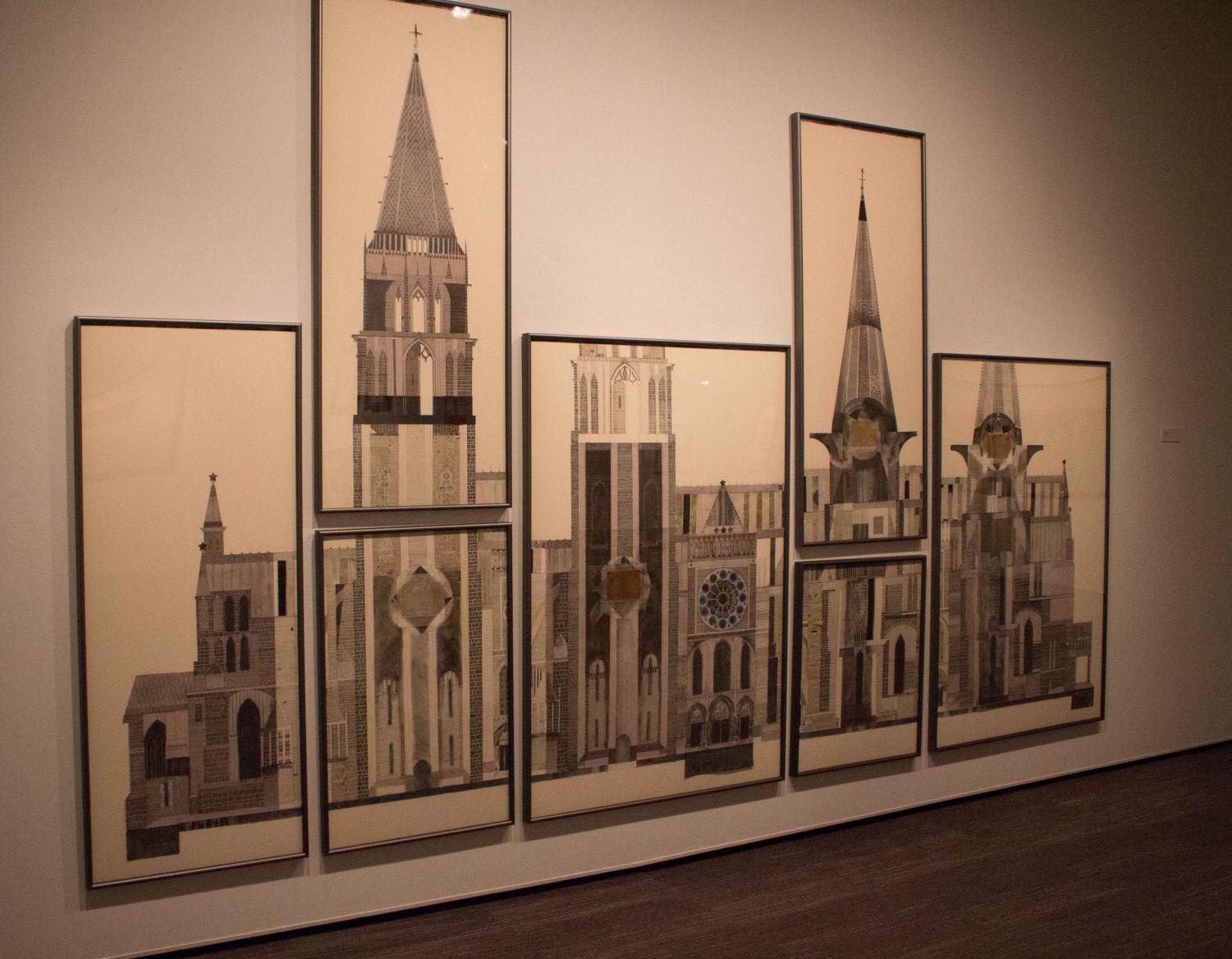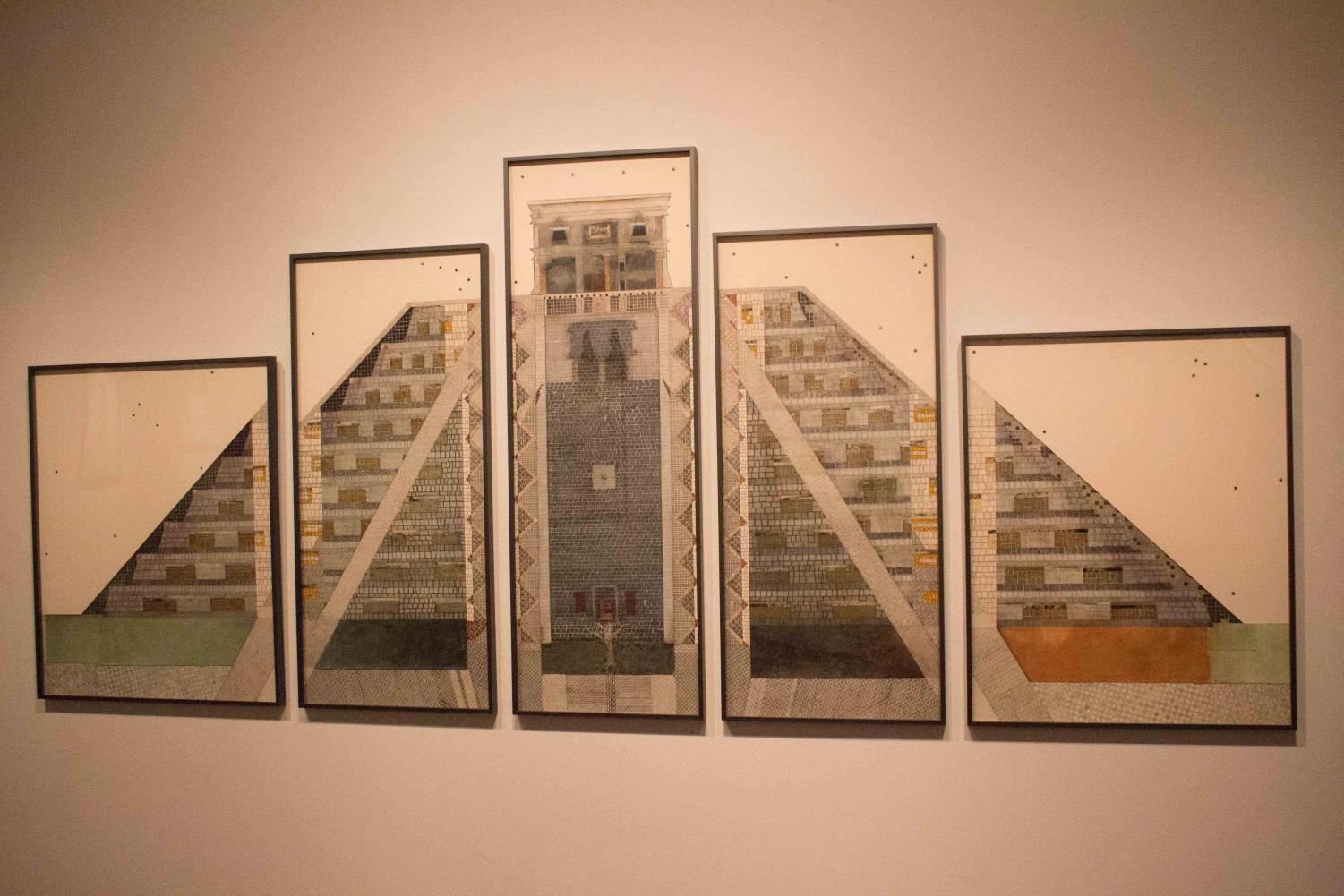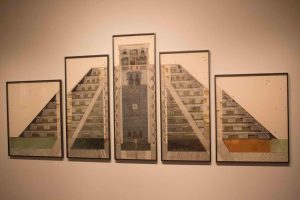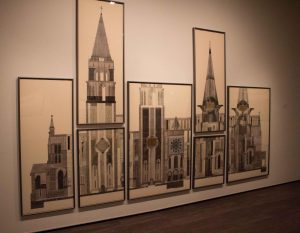Professor turns monuments to art
Jan 11, 2018
Monumental art by a visiting professor is currently being exhibited in UNI’s Gallery of Art. The “Anastylosis Project” received its name from the process of restoring a monument by deconstructing it and rebuilding it using the original materials and methods. Artist Mary Griep’s exhibit was created using anastylosis and is on display from Jan. 8 through Feb. 27. The exhibit represents years of work inspired by sacred architecture throughout the world.
Griep is a Professor Emerita of Art and Art History at St. Olaf College. She has been the chair of that college’s art department, where she is also an associate dean of the fine arts division. Griep’s ‘Anastylosis Project’ makes strong references to the practice of anastylosis in each piece of artwork. Some of the pieces represent medieval architecture, such as the Hindu Temple of Angkor Wat (Cambodia), the Buddhist Temple of Thatbyinnyu (Myanmar) and the Mayan Palace of the Governors (Mexico).
Art Gallery Director Darrell Taylor mentioned that Griep’s project had been in progress for a couple decades.
“The earliest piece is ‘Chartres Cathedral,’ the very first in her series,” Taylor said. “The last one she did, she just finished, and we are showing it for the first time. It’s the ‘Baptistery of Saint John’ in Florence, Italy. She just finished it days before it shipped to us.”
According to Taylor, the idea of anastylosis is a springboard for what Griep is attempting to show in her project.
“That’s the beauty of looking at these from a distance; you can see the entire structure from the hallway outside of the gallery, and as you get closer, you begin to see all of this incredible detail that makes up the architecture,” Taylor said. “She’s using a number of techniques. She’s drawing, using collage elements, layering images upon images.”
Taylor also said that some of the pieces even include layers of magazine and book cut-outs.
“That’s the beauty of this work; you can see what the structure looks like from a distance, and you can see what it took to create this structure up close,” Taylor said.
With regards to diversity, students can appreciate Griep’s variety of cultural and religious monuments shown in her project.
“That’s the beauty of this project is that she’s not just concentrating on the more famous European cathedrals, she’s going to all of these wonderful places in the world where other sacred structures are located, like in Cambodia, Greece, Norway and Turkey,” Taylor said. “She’s going to those places too because those are also sacred sites, and seeing them all together like this, you begin to understand this world-view of sacred architecture.”
Griep will be giving her lecture over the Anastylosis Project on Jan. 17 at 6 p.m. in the Kamerick Art Building. An opening reception will follow the lecture. Until then, the exhibit is open to the public.












